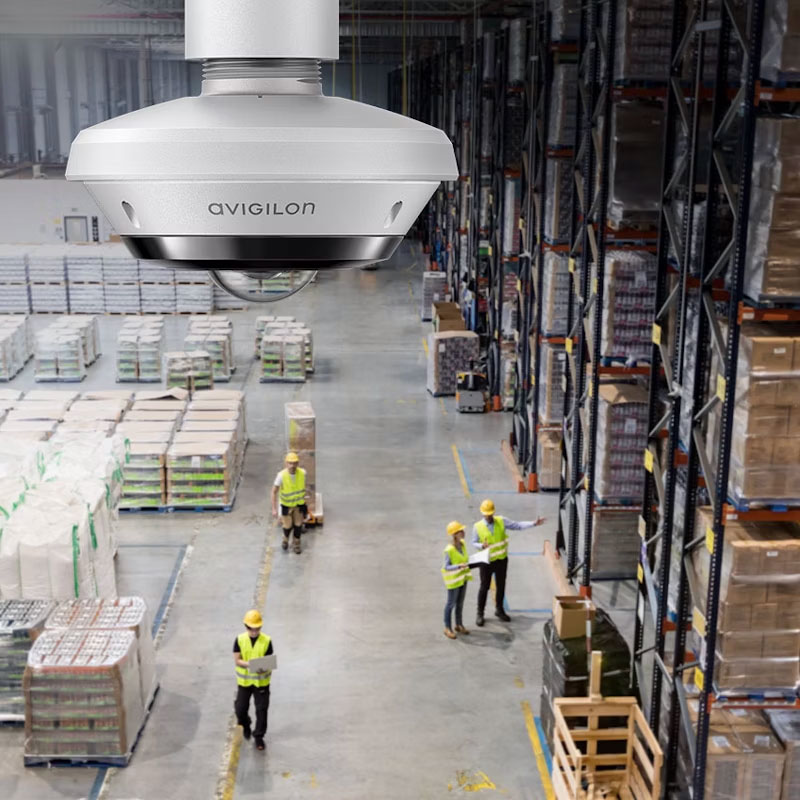Design begins with threat-led coverage mapping, site evaluation, and impact tolerances. Select cameras by zone: 4K for identification, 1080p for detection, paired with appropriate lenses and ruggedized, low-light form factors. Engineer segmented, PTP-synchronized networks with PoE++, non-blocking cores, and zero-touch provisioning.
Plan tiered storage using H.265/SMART codecs, edge buffering, immutable central archives, and tested backups. Enforce zero-trust, 802.1X, SRTP, MFA, and RBAC. Embed privacy-by-design with defined retention and DPIAs. Favor ONVIF and cloud-agnostic, containerized VMS to maintain growth options.
Assessing Risks, Sites, and Coverage Requirements
Although site layouts and business operations vary, risk assessment begins by enumerating credible threats, assets, and impact tolerances—then mapping them to coverage objectives.
A structured threat analysis identifies adversary capability, intent, and likelihood, aligned with business objectives and regulatory obligations. Site evaluation documents perimeters, ingress/egress points, critical zones, lighting baselines, and obstructions.
Environmental considerations—weather, temperature, reflectivity, dust, EMI sources, and vibration—inform reliability and image integrity requirements. Coverage mapping translates risks into monitored areas, fields of view, detection zones, and redundancies, with defined performance criteria (e.g., identification, recognition, detection thresholds).
Outputs include monitoring tiers, response expectations, retention implications, and scalability allowances for future expansion. Assumptions, constraints, and dependencies are logged for traceability and audit-ready justification.
Choosing Camera Types, Lenses, and Form Factors
Coverage objectives define what must be seen; camera types and lenses define how.
- Resolution: Identification zones favor 4K or higher; detection corridors can use 1080p with analytics.
- Lens Types: Fixed, varifocal, and motorized zoom enable precision control.
- Form Factors: Dome, bullet, turret, and PTZ options are matched to tamper risk and installation flexibility.
- Durability: Validate IP66/67, IK10, and operating temperature ranges.
- Low-Light Performance: Prioritize larger sensors, fast apertures, IR/white-light options, and WDR.
- Integration: Ensure ONVIF/RTSP compliance, accessory support, and VMS interoperability.
Designing a Network Architecture Built to Scale
A scalable security network requires deterministic performance and fault tolerance.
Use a spine-leaf topology with non-blocking uplinks, QoS for real-time streams, and multicast (IGMP/MLD). Segment networks using 802.1Q VLANs and VRFs to isolate domains. Harden access with 802.1X, MACsec, and DHCP snooping.
Adopt modular components—PoE++ access switches, redundant cores, and SD-Access/EVPN fabrics—to scale with demand.
Synchronize via PTP, DNS resiliency, and redundant NTP/PKI anchors. Automate provisioning with Zero-Touch and Infrastructure-as-Code. Monitor continuously using NetFlow/IPFIX, SNMP, and syslog with threshold alerts.
Storage Planning: Retention, Compression, and Edge vs. Central
Storage must meet evidentiary, regulatory, and performance requirements.
Calculate capacity based on camera count, resolution, frame rate, and retention policies. Apply H.265/SMART codecs to reduce footprint while preserving integrity.
Edge storage buffers outages and accelerates retrieval, while central storage provides immutable archives and audit controls. Combine SSD edge and object-based central storage for scalable, cost-effective design.
Backup with offsite replicas, WORM locks, checksums, and restore tests aligned to RPO/RTO.
Bandwidth Management and Video Quality Optimization
Prevent congestion and fidelity loss through intelligent bandwidth management.
Use ONVIF profiles, DSCP markings, and SLA-backed WAN capacities. Shape per-camera traffic, prioritize alarms, and rate-limit noncritical feeds.
Adopt adaptive bitrate streaming and tune codecs (H.265/HEVC, Smart Codec, MJPEG) by scene dynamics. Standardize GOP, FPS, and resolution tiers by zone.
Continuously validate MOS, PSNR, packet loss, and jitter, triggering adjustments when thresholds drift.
Cybersecurity Hardening and Access Control Policies
Secure the ecosystem through zero-trust segmentation, MFA, and RBAC enforcement.
Zero-Trust Network Segmentation
Treat every device, user, and workload as untrusted by default. Implement micro-segmentation per NIST SP 800-207, enforcing least-privilege access at every hop.
| Zone | Permitted Flows | Policy Outcome |
| Cameras | RTP/RTSP to VMS | Allow |
| VMS | TLS to storage | Allow |
| Cameras → Admin | Any | Deny |
Strong Authentication and Authorization
Use phishing-resistant MFA (FIDO2/WebAuthn, PIV) and TLS 1.2+ with mutual authentication. Centralize identity using SAML/OIDC and OAuth 2.0.
Implement short-lived tokens, signed JWTs, and continuous monitoring of authentication events.
Least-Privilege Role Policies
Assign rights strictly by function—installer, operator, investigator, maintainer. Enforce just-in-time elevation, context-aware access, and deny-by-default baselines.
Audit logs must validate privilege use and support rapid revocation.
Compliance, Privacy, and Data Governance Considerations
Anchor every design in compliance, privacy, and data governance to mitigate legal and operational risks.
| Domain | Control Objective | Evidence Artifact |
| Governance | Policy hierarchy, ownership | Policy register, RACI |
| Privacy | Consent, notices, DPIAs | Consent logs, DPIA reports |
| Security | Encryption, key management | KMS configs, key rotation logs |
| Lifecycle | Retention, deletion, audit | Retention matrix, purge proofs |
| Response | Detection, containment, reporting | Playbooks, post-incident reviews |
Ensure privacy-by-design, ethical surveillance, and transparent retention policies from inception.
Open Standards, Integrations, and Future-Proof Expansion Strategies
Adopt ONVIF, SIP, RTSP, SRTP, 802.1X, and STIX/TAXII to avoid vendor lock-in.
Enable multi-vendor onboarding, consistent telemetry, and secure transport. Mitigate firmware fragmentation with normalized metadata and schema registries.
Future-proof via containerized VMS, edge AI (ONNX models), and S3-compatible storage. Use stateless services, horizontal sharding, and zero-trust identity for distributed scaling.
Governance should include exit clauses, data egress tests, and reference architectures to maintain flexibility.
Ready to Build a Future-Proof Surveillance Architecture?
A truly scalable video surveillance system goes beyond hardware—it’s an ecosystem of risk-driven design, resilient networking, and zero-trust governance.
If you’re planning to upgrade or expand your video infrastructure, our experts can help you assess your current environment, architect a growth-ready solution, and implement secure, standards-based designs.
Contact our security engineering team today to start building a surveillance platform that grows with your business and keeps you compliant, connected, and protected.

